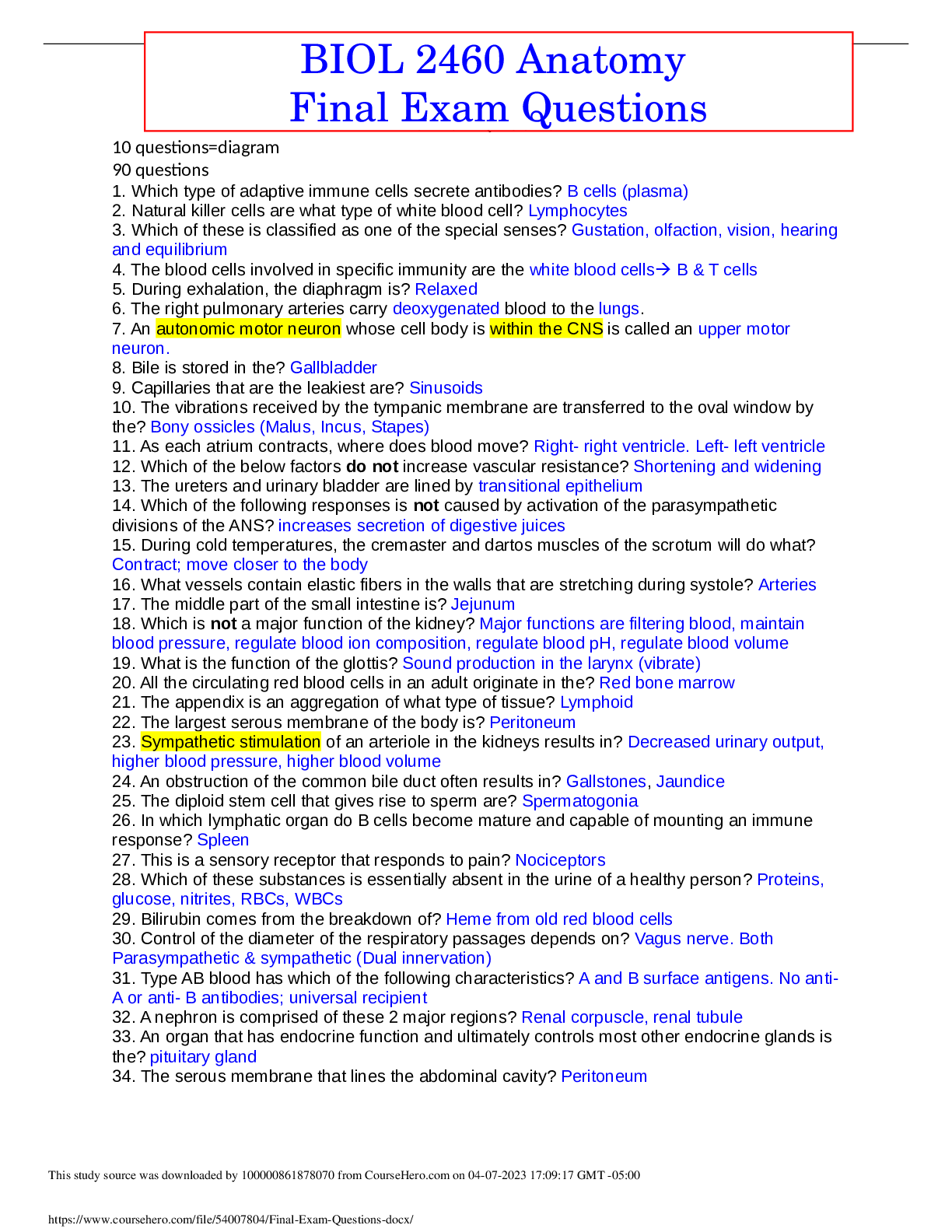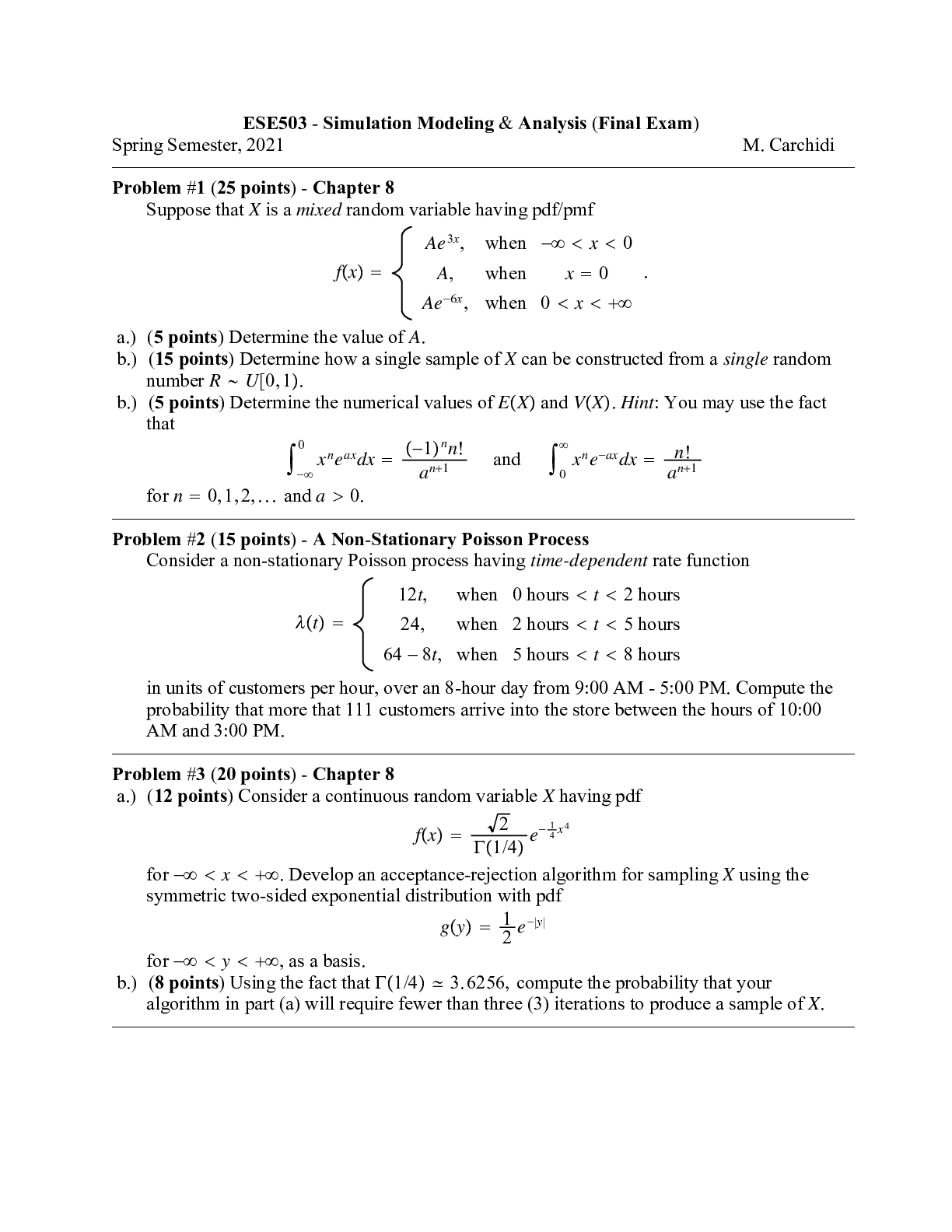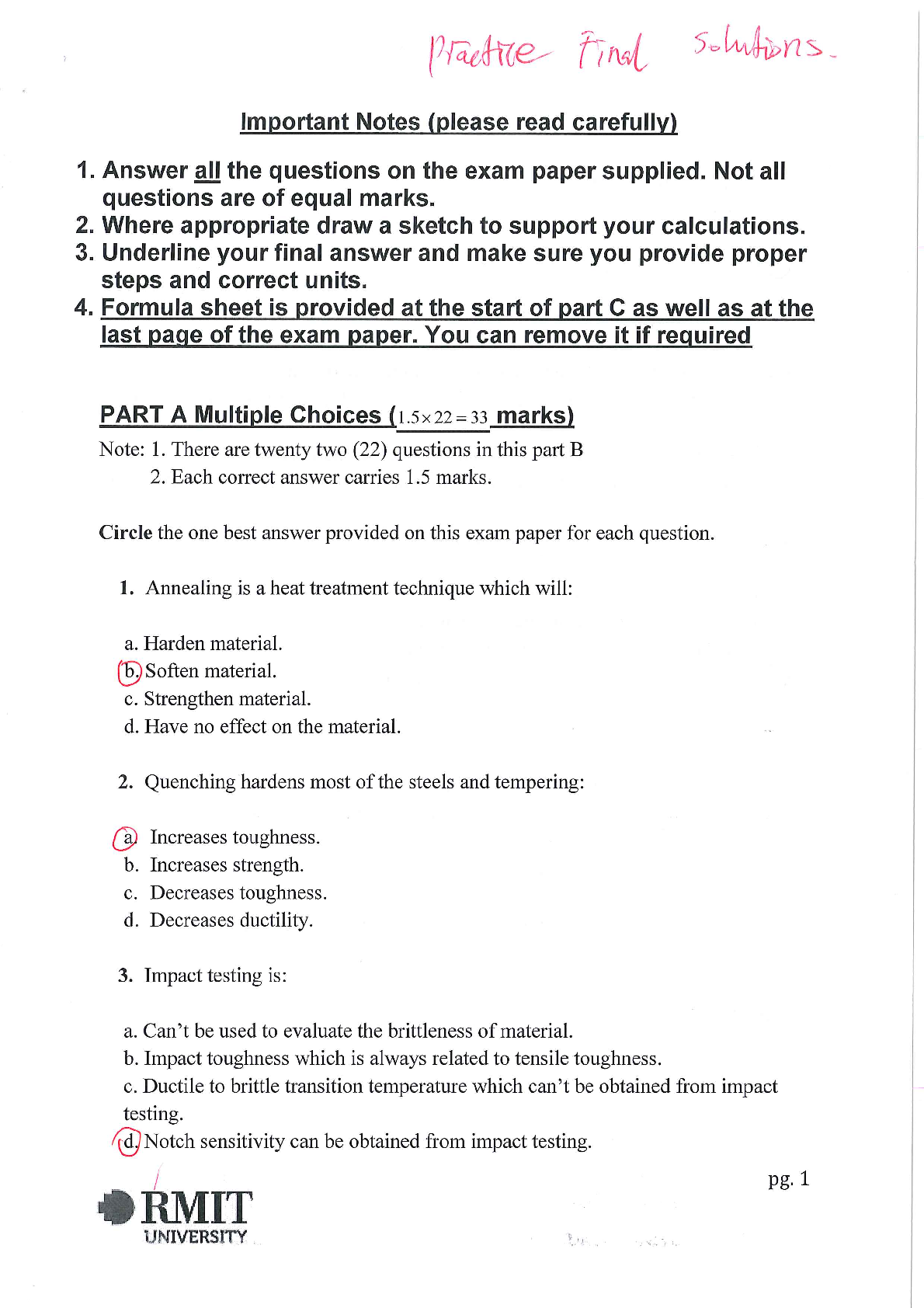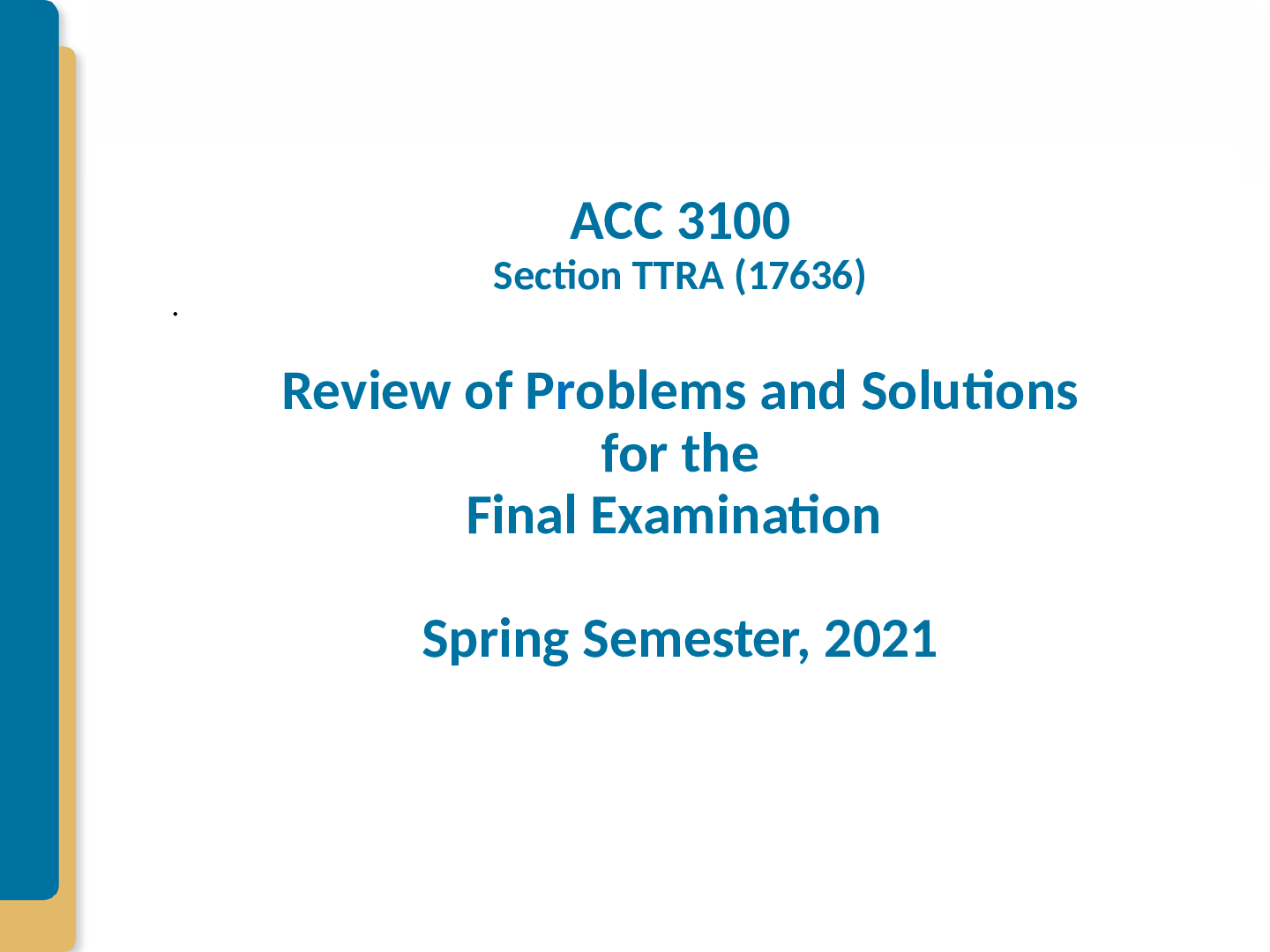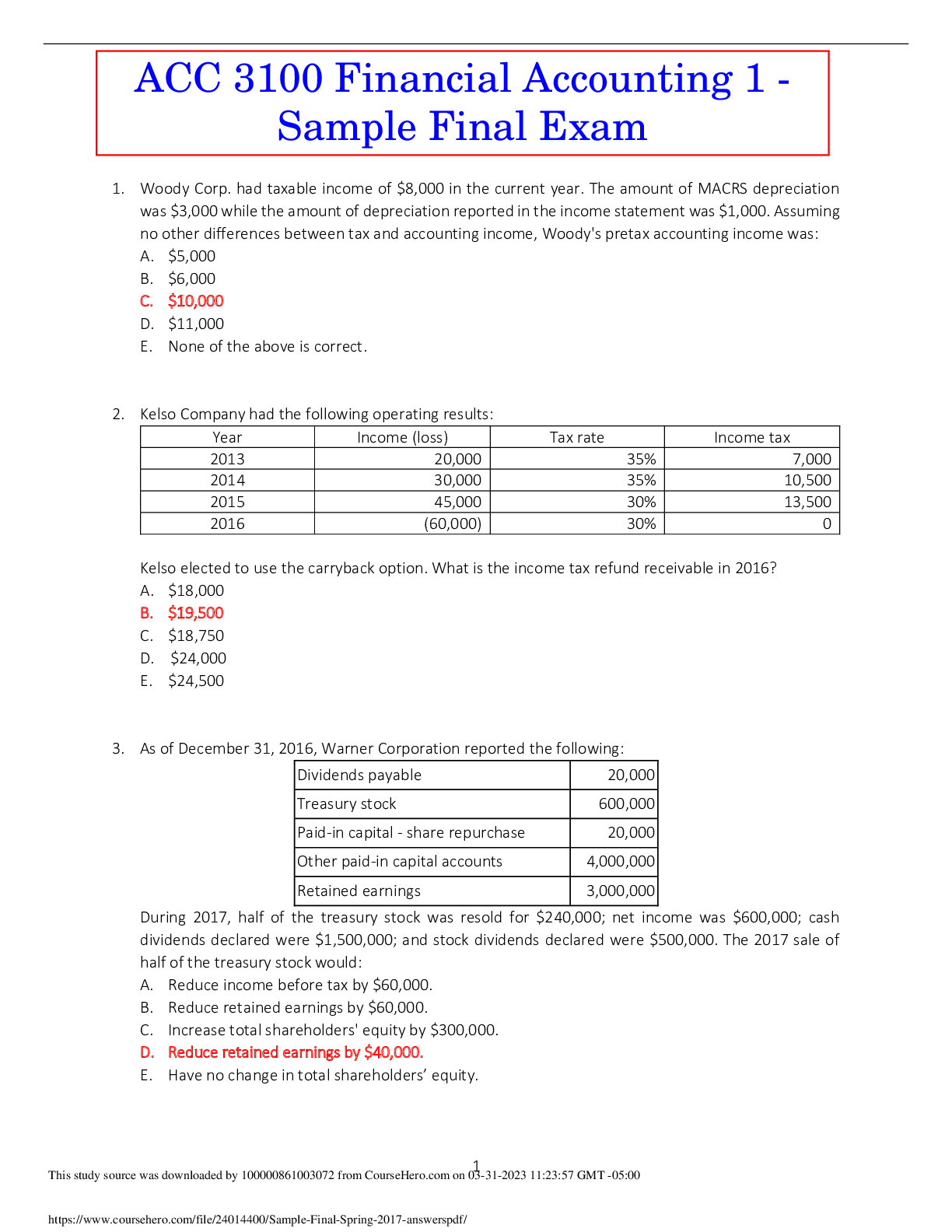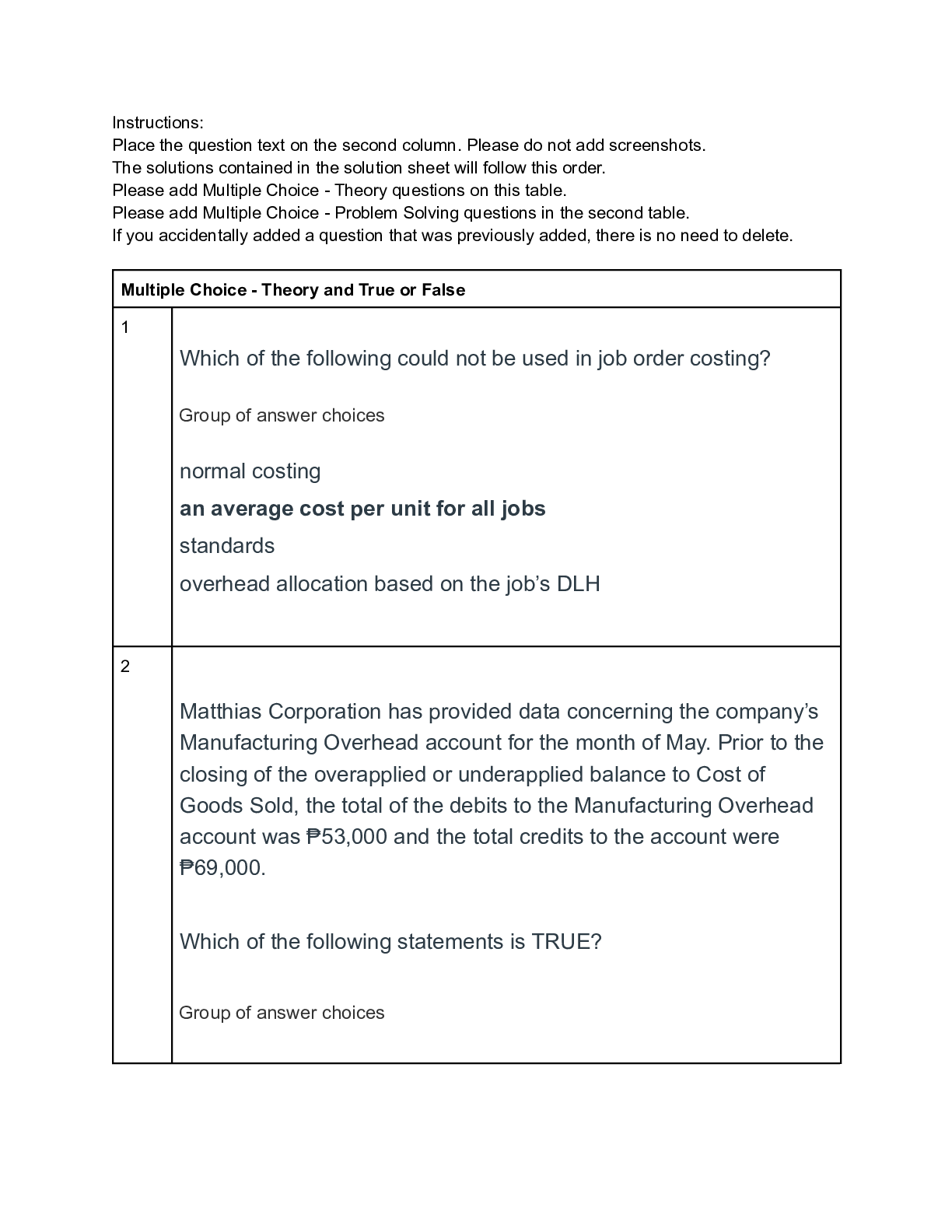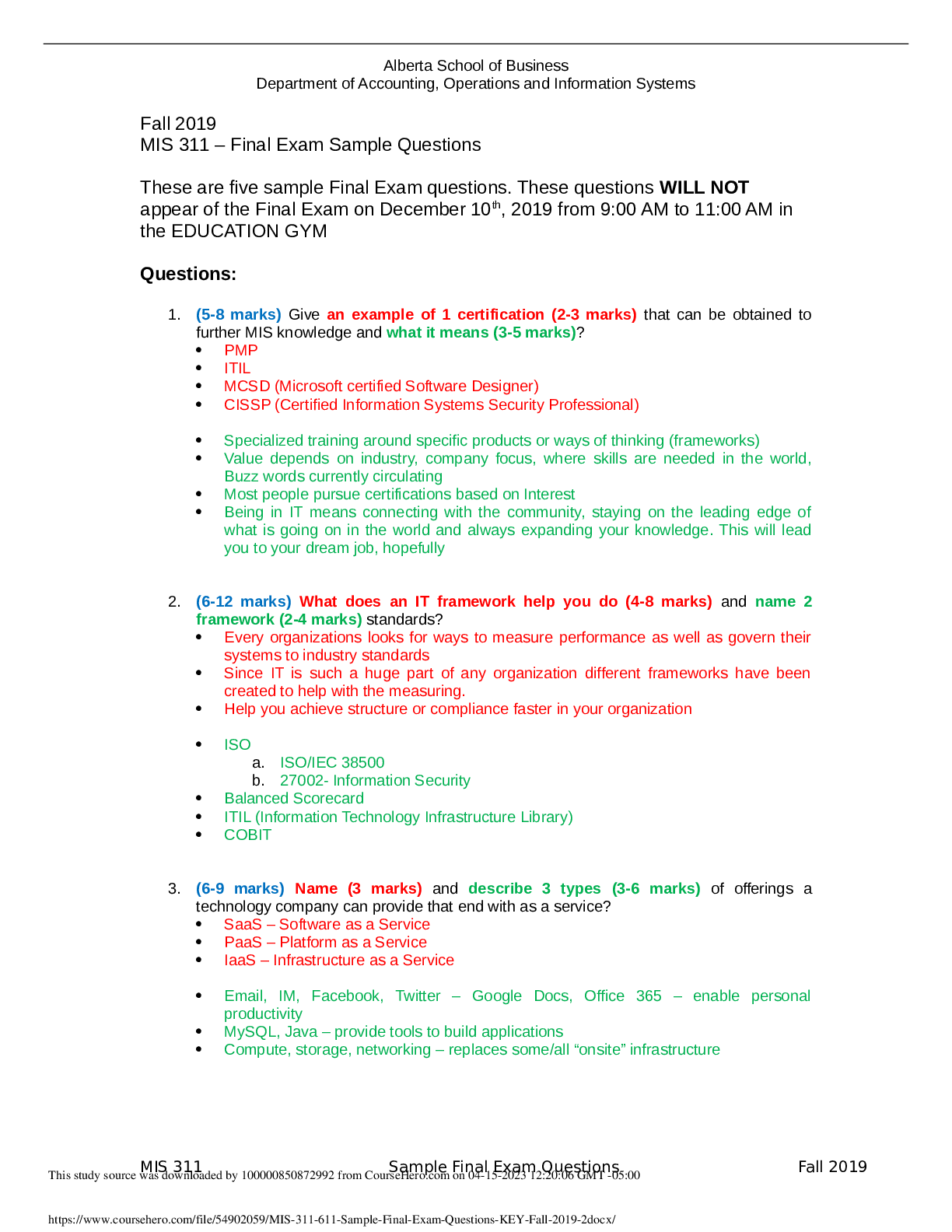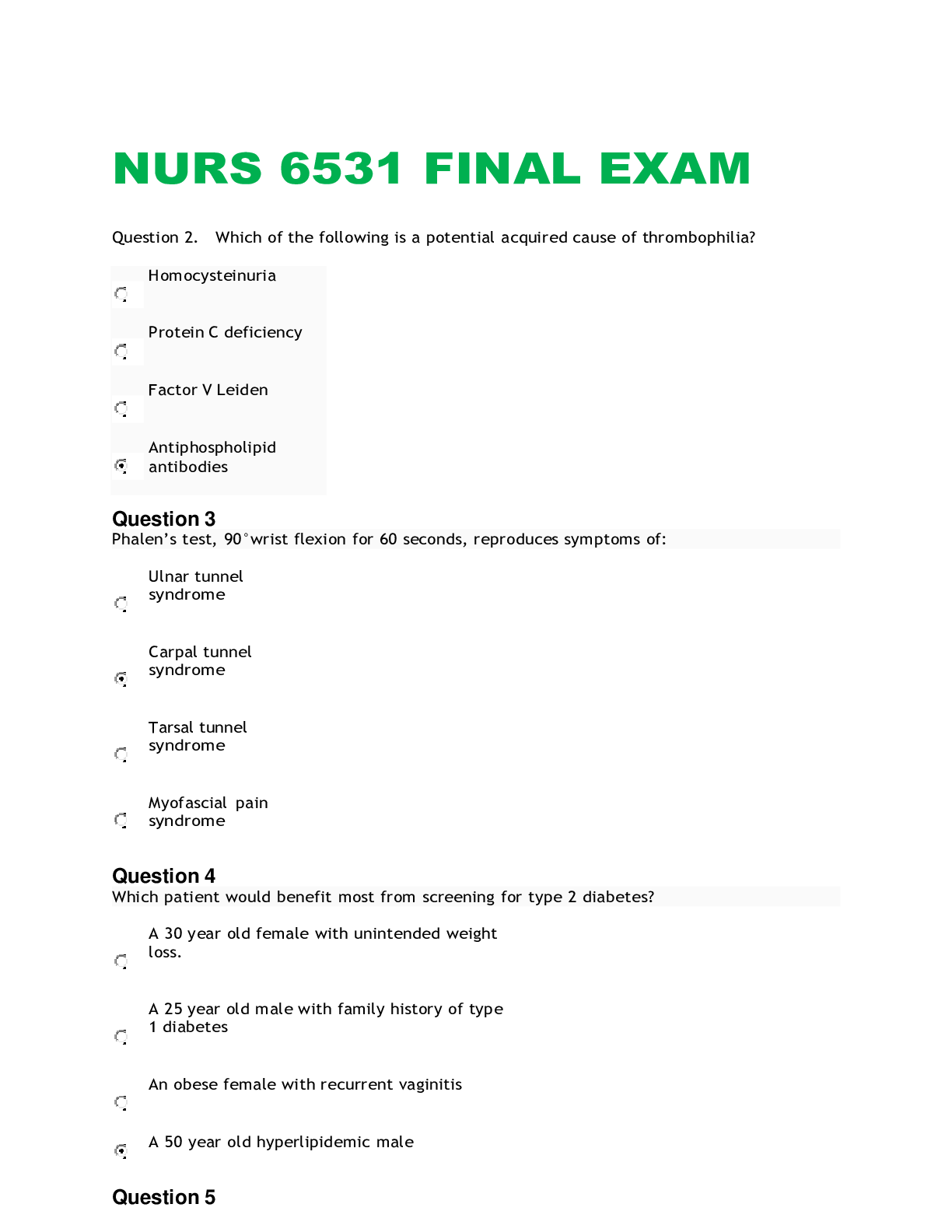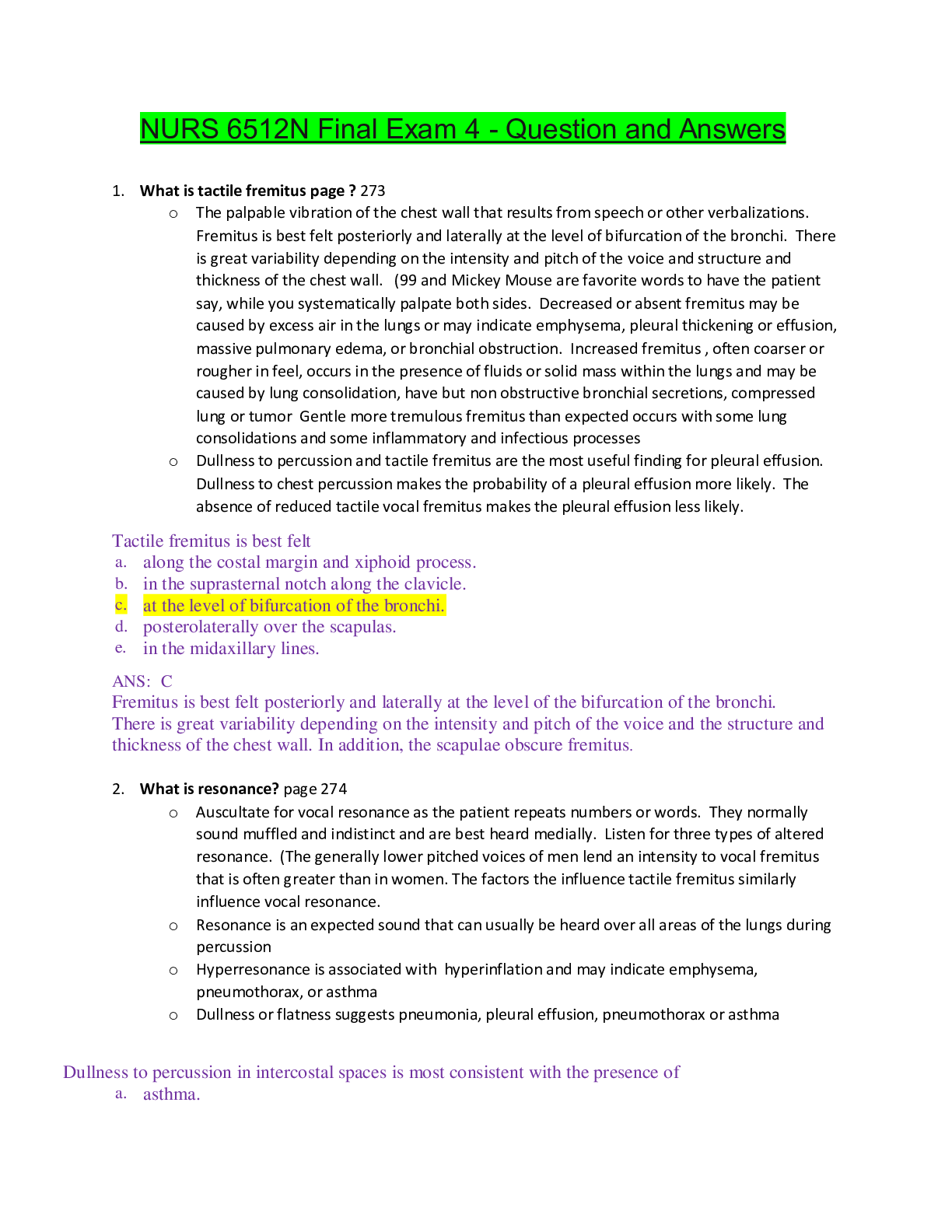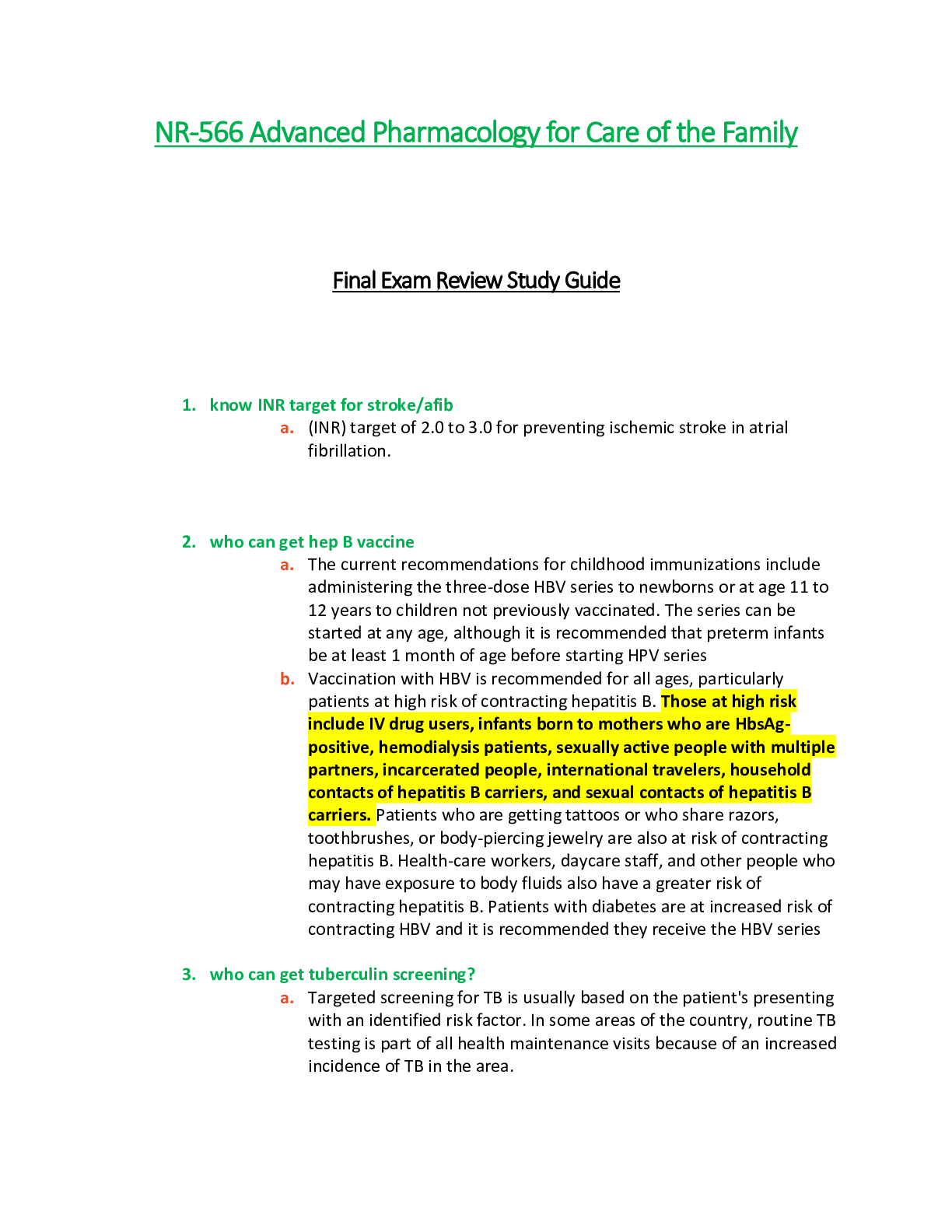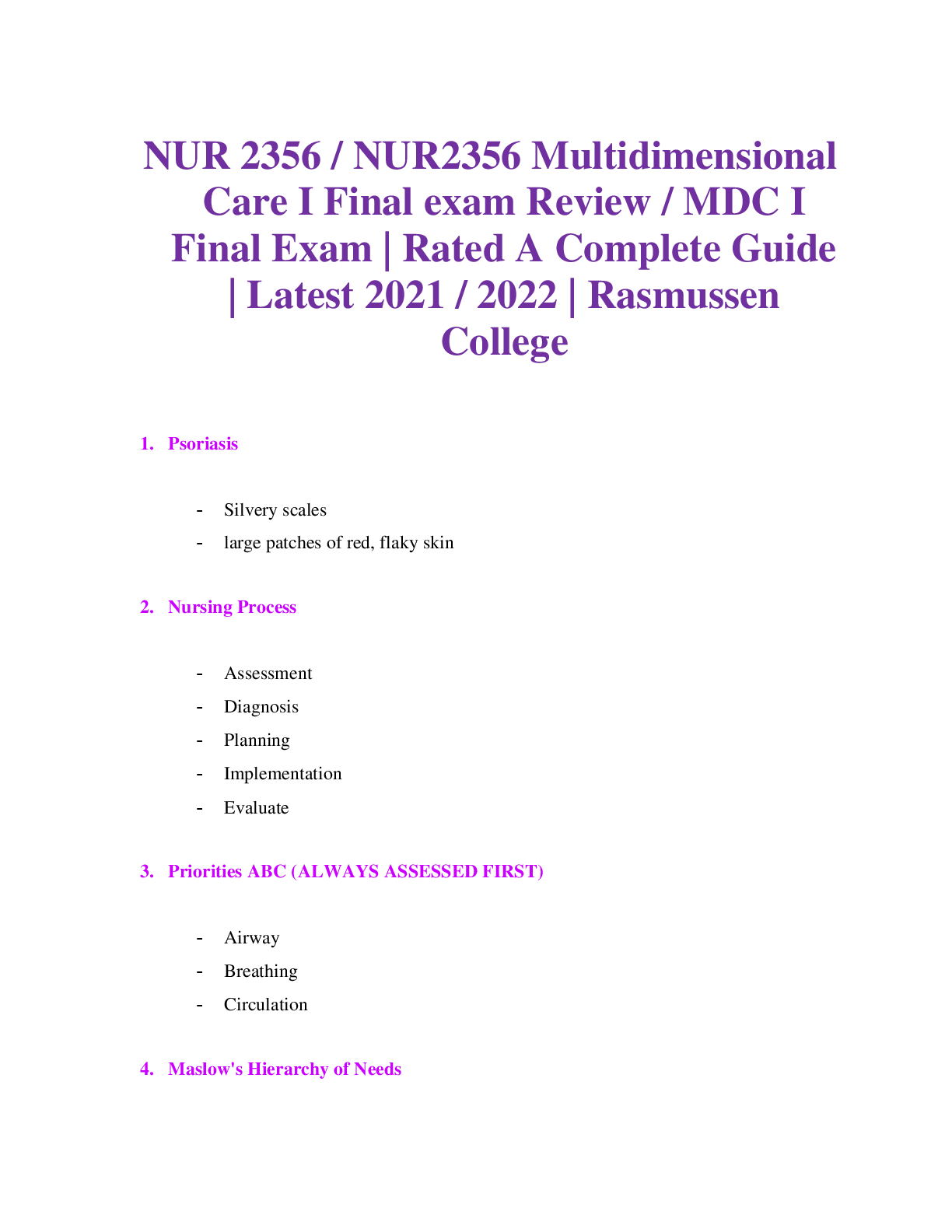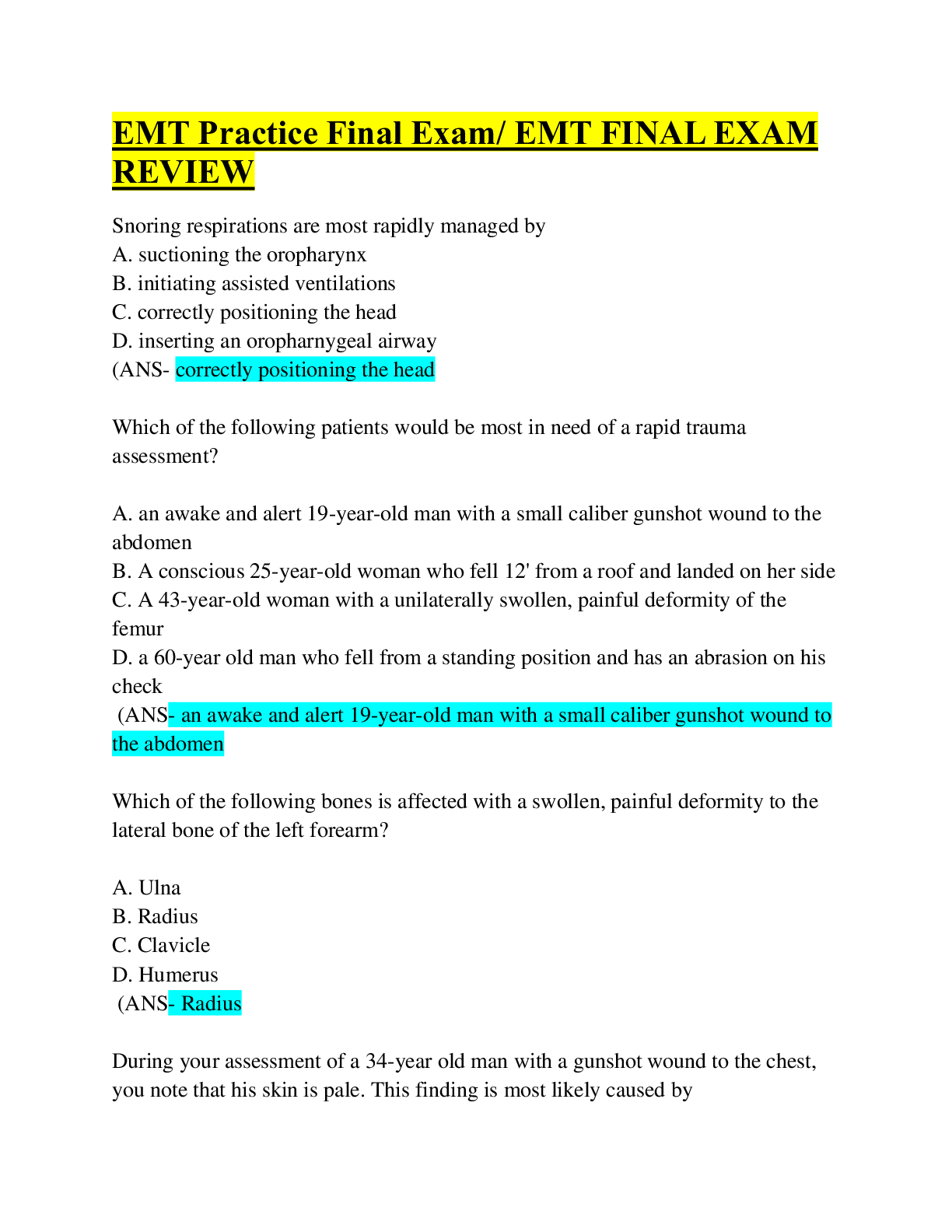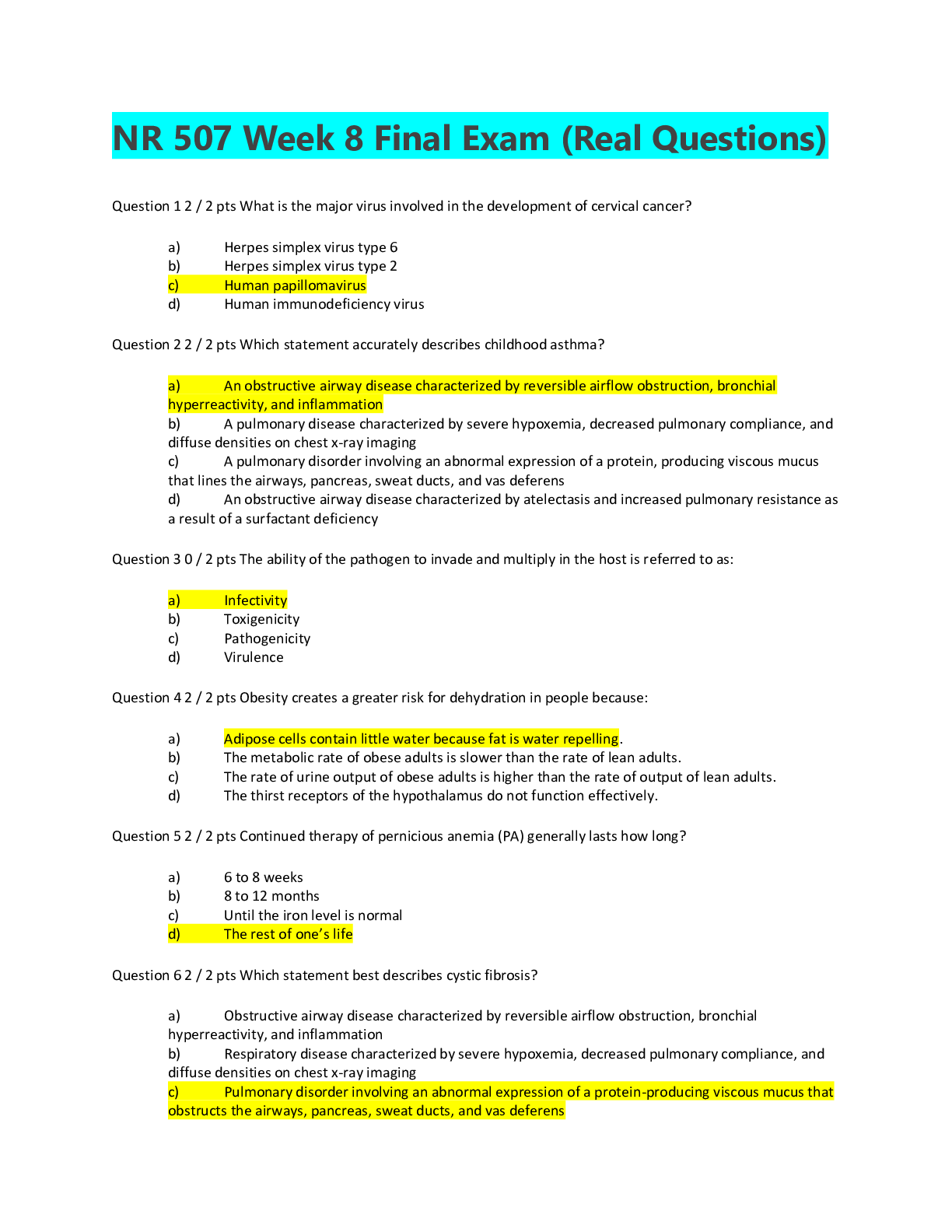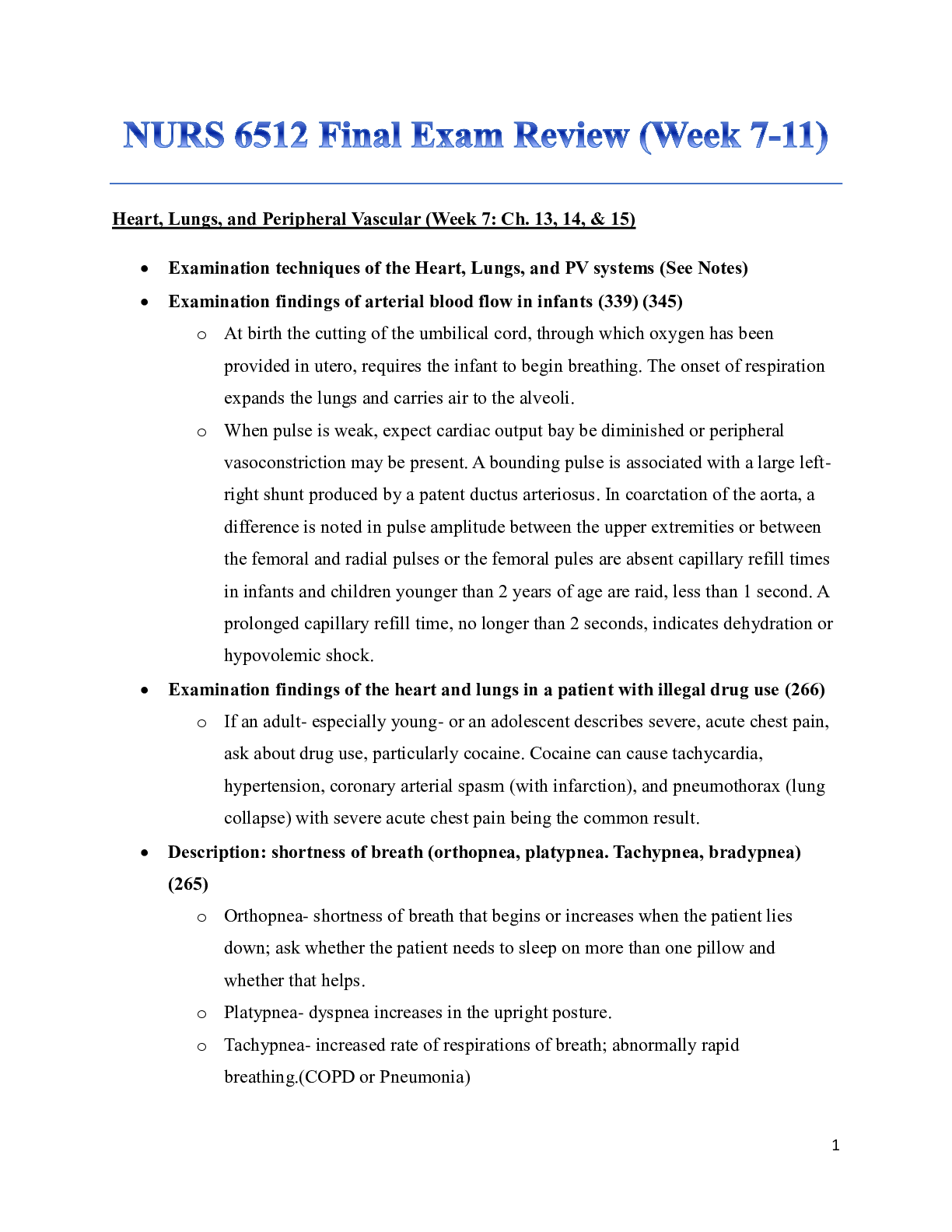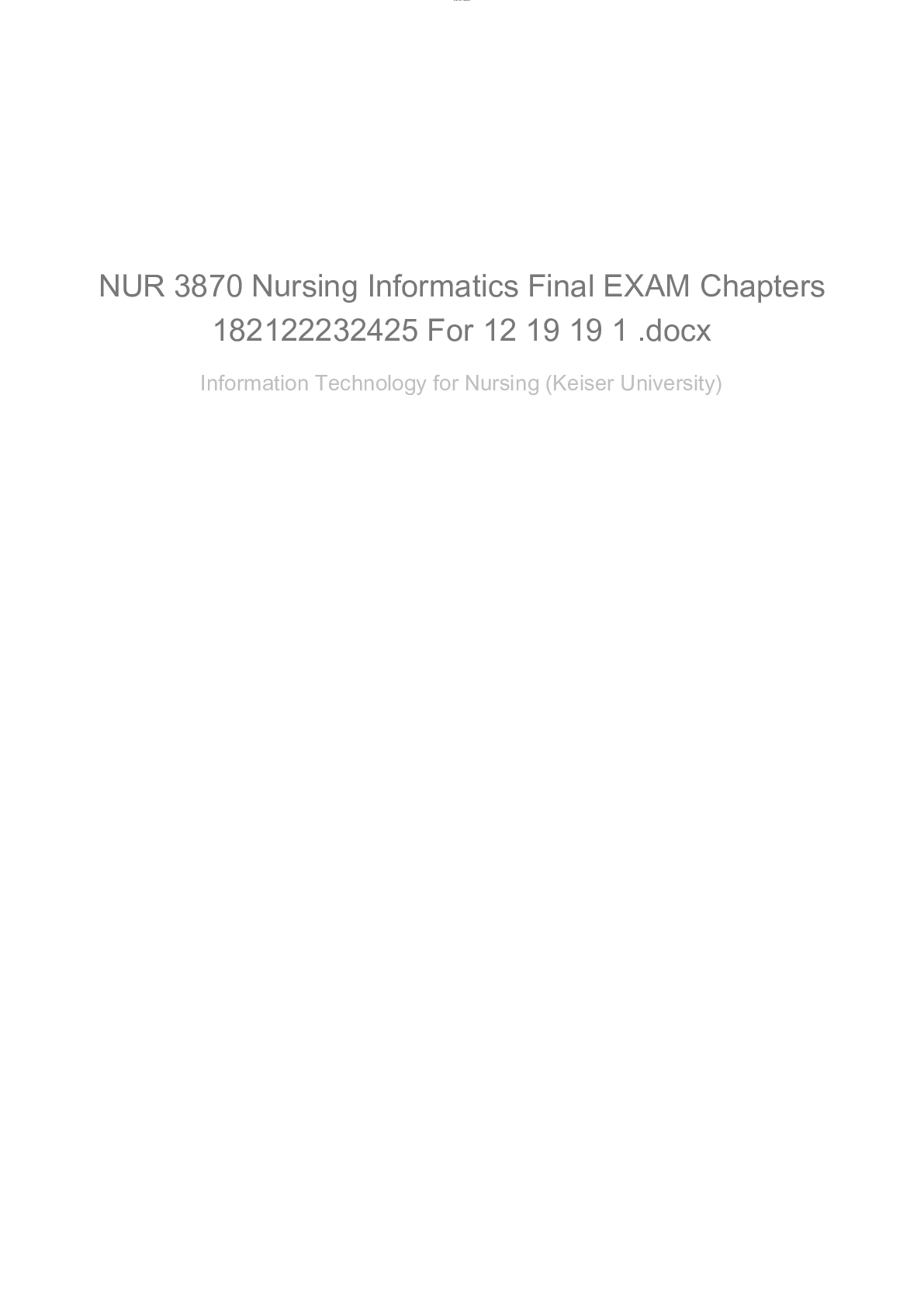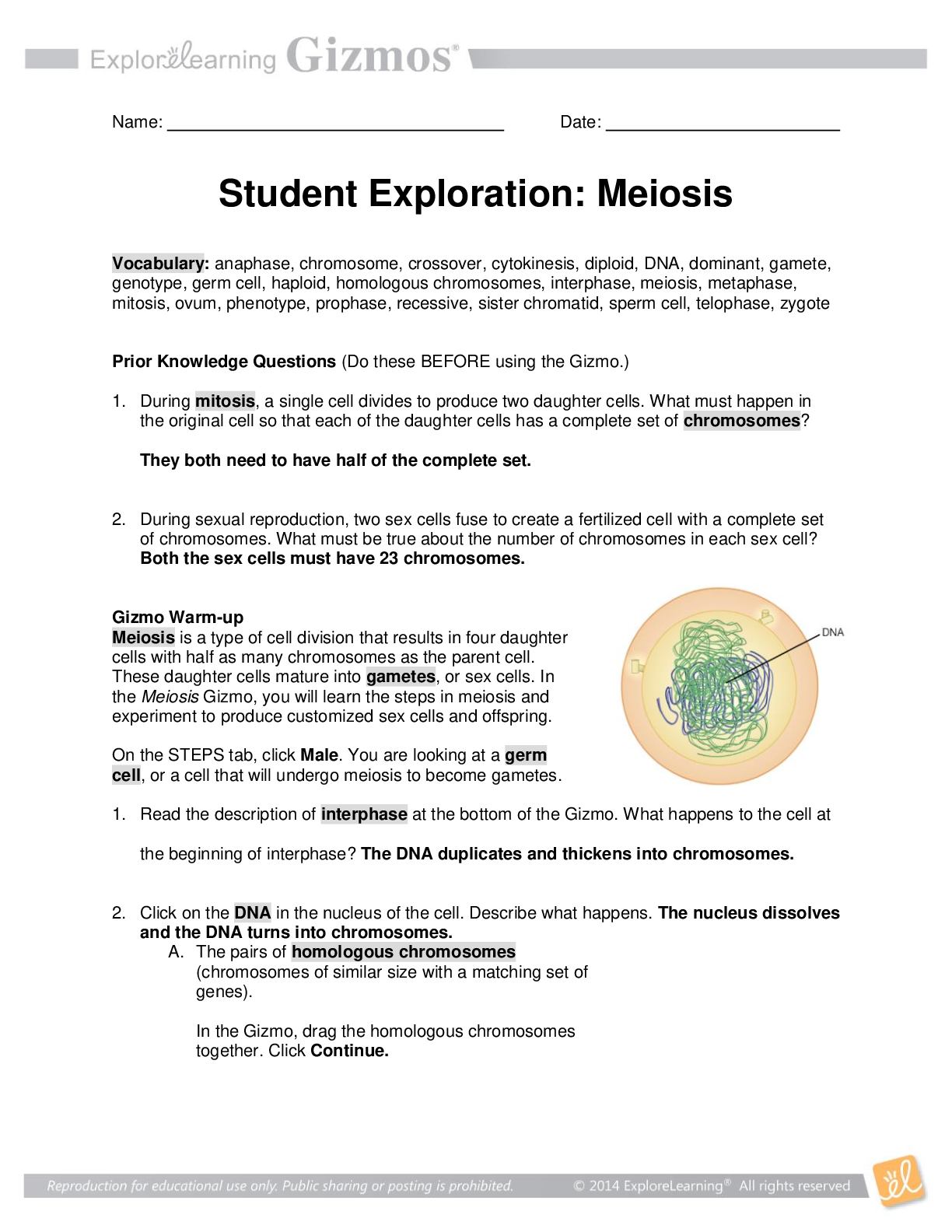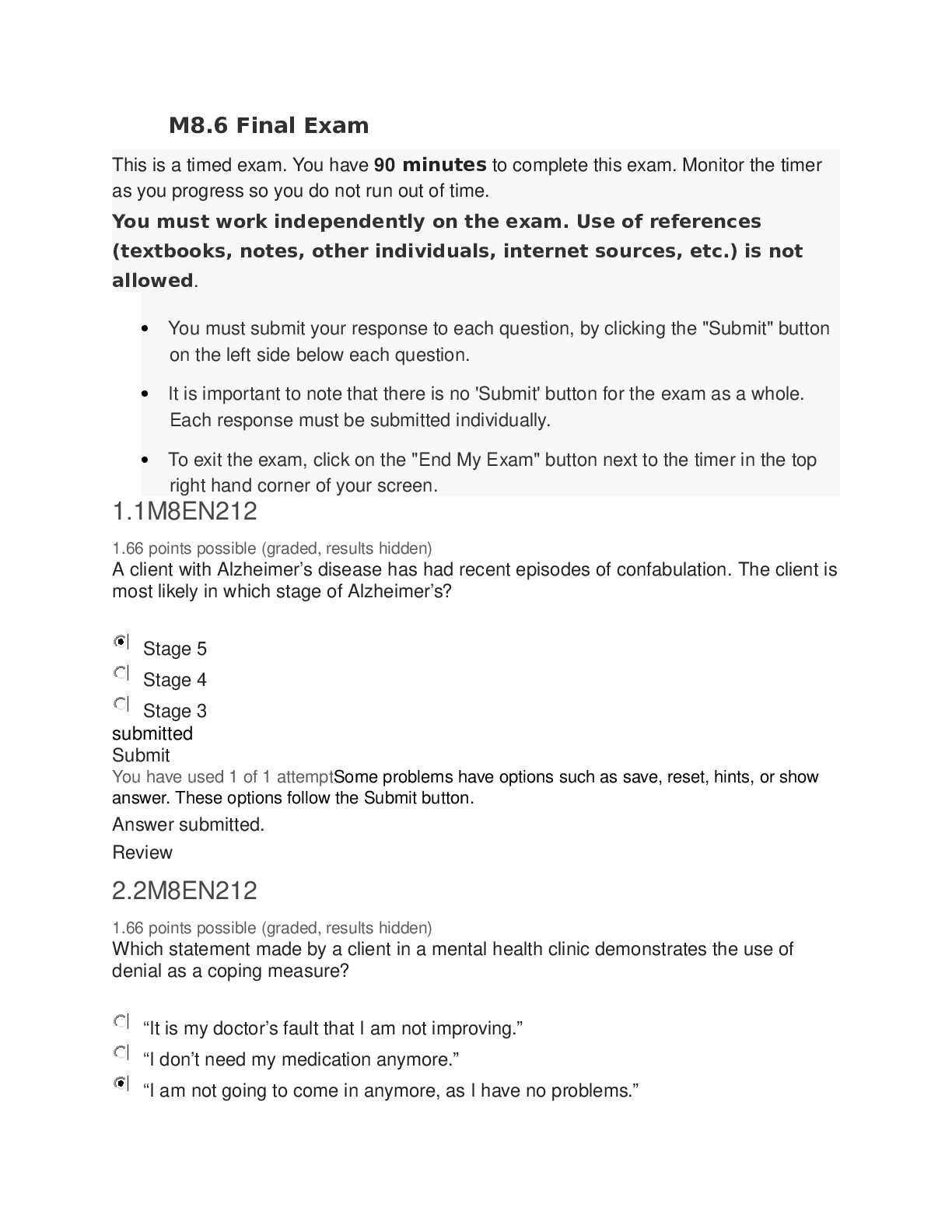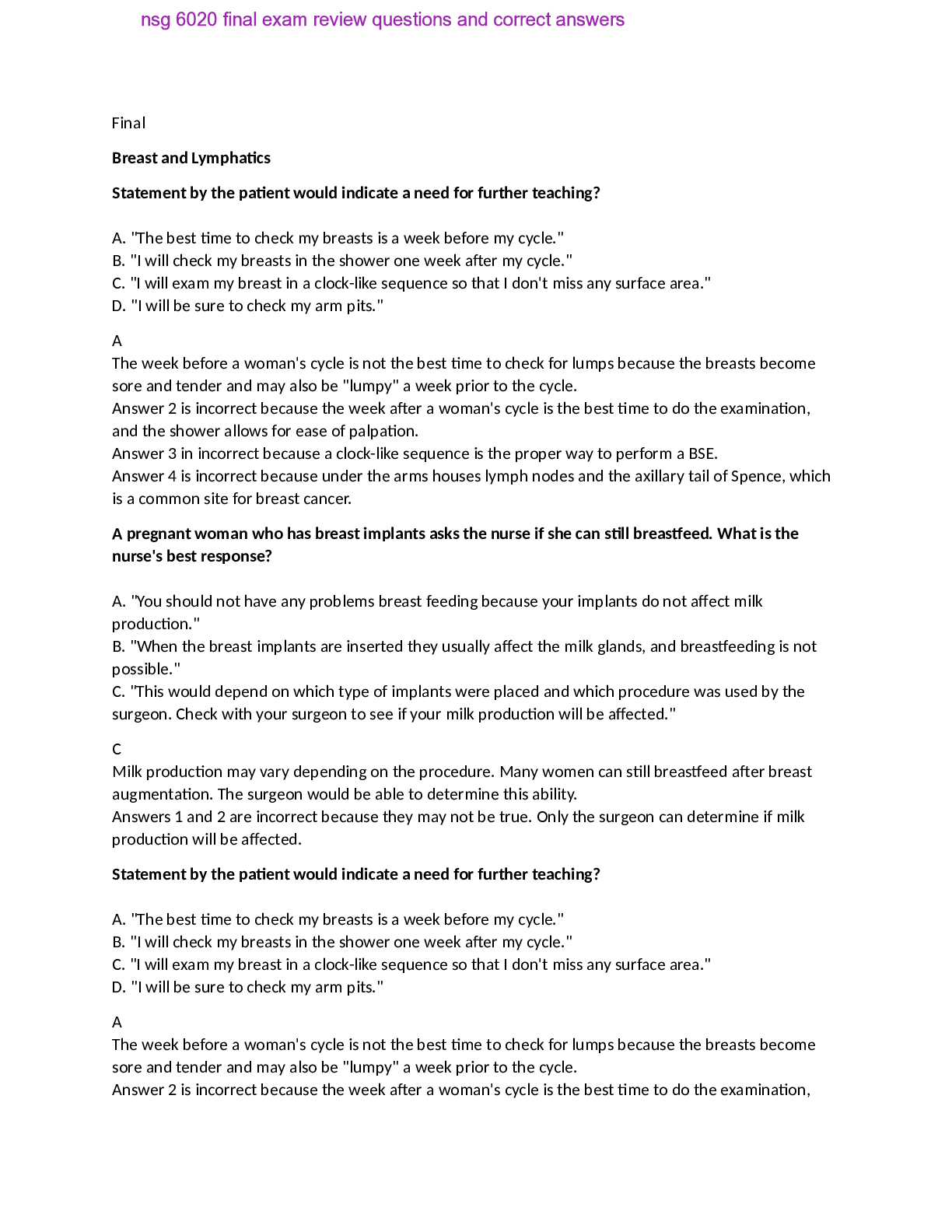Psychology > Final Exam Review > PSYC 280 Biological psychology - Simon Fraser University. PSYC 280 Final Exam (All)
PSYC 280 Biological psychology - Simon Fraser University. PSYC 280 Final Exam
Document Content and Description Below
PSYC 280 Biological psychology - Simon Fraser University. PSYC 280 Final Short Answers: 1) The four types of skin receptors are as follows: 1) Pacinian corpuscle: These receptors are sensiti... ve to high-frequency vibration (around 250 Hz) and deep pressure. They are found in Deep dermis, subcutaneous tissue and joint capsules. They are also known as Lamellated corpuscle. 2) Meissner's corpuscle: These receptors detect light and vibrations below 50hz and are sensitive to light touch and small changes in stimuli. They are found in Papillary dermis, especially in the fingertips and lips and are also called Tactile corpuscle. 3) Merkel's disc: These receptors are sensitive to edges and isolated points and detect Low frequency vibration (5–15 Hz). They are found in the epidermal–dermal junction of the mucosal membranes. They are also known as Mechanoreceptors. 4) Ruffini corpuscle: These receptors detect stretching of the skin and are found in Dermis and joint capsules. They are also called Bulbous corpuscle. 2) The primary motor cortex is found in a gyrus known as the precentral gyrus that is positioned just in front of the central sulcus, it contains large neurons with triangularshaped cell bodies that are called pyramidal neurons. These are the primary output cells of the motor cortex. The axons of pyramidal cells leave the motor cortex carrying information about voluntary movement and enter one of the tracts of the pyramidal system, which includes the corticospinal and corticobulbar tracts. Pyramidal neurons form connections with lower-level neurons which innervate the skeletal system. The nonprimary motor cortex, which is anterior to the primary motor cortex and contains two prominent regions known as the premotor cortex and supplementary motor cortex. Neurons in the premotor cortex also appear to be involved with incorporating sensory cues and the supplementary motor cortex executes sequences of movement. 3) In response to mild or moderate tactile stimulation of its skin, Aplysia reflexively withdraws its gill and syphon. This defensive withdrawal reflex becomes habitual after repeated tactile stimulation. This causes Short-term habituation (less than 30 minutes) and long-term habituation (more than 24 hours) in Aplysia. Habituationrelated short-term depression of the sensorimotor synapse appears due to presynaptic changes. However, changes within the sensory neuron, by themselves, do not account for long term depression of the sensorimotor synapse. In Aplysia, long-term habituation is dependent on postsynaptic processes, specifically the activation of AMPA- and NMDA-type receptors. Furthermore, long-term habituation necessitates the action of protein phosphatases 1, 2A, and 2B, as well as the activity of voltage-dependent Ca2+ channels. Homosynaptic Long term depression of the sensorimotor synapse requires elevated intracellular Ca2+ within the motor neuron. [Show More]
Last updated: 1 year ago
Preview 1 out of 4 pages
Instant download

Instant download
Reviews( 0 )
Document information
Connected school, study & course
About the document
Uploaded On
Apr 10, 2023
Number of pages
4
Written in
Additional information
This document has been written for:
Uploaded
Apr 10, 2023
Downloads
0
Views
43

